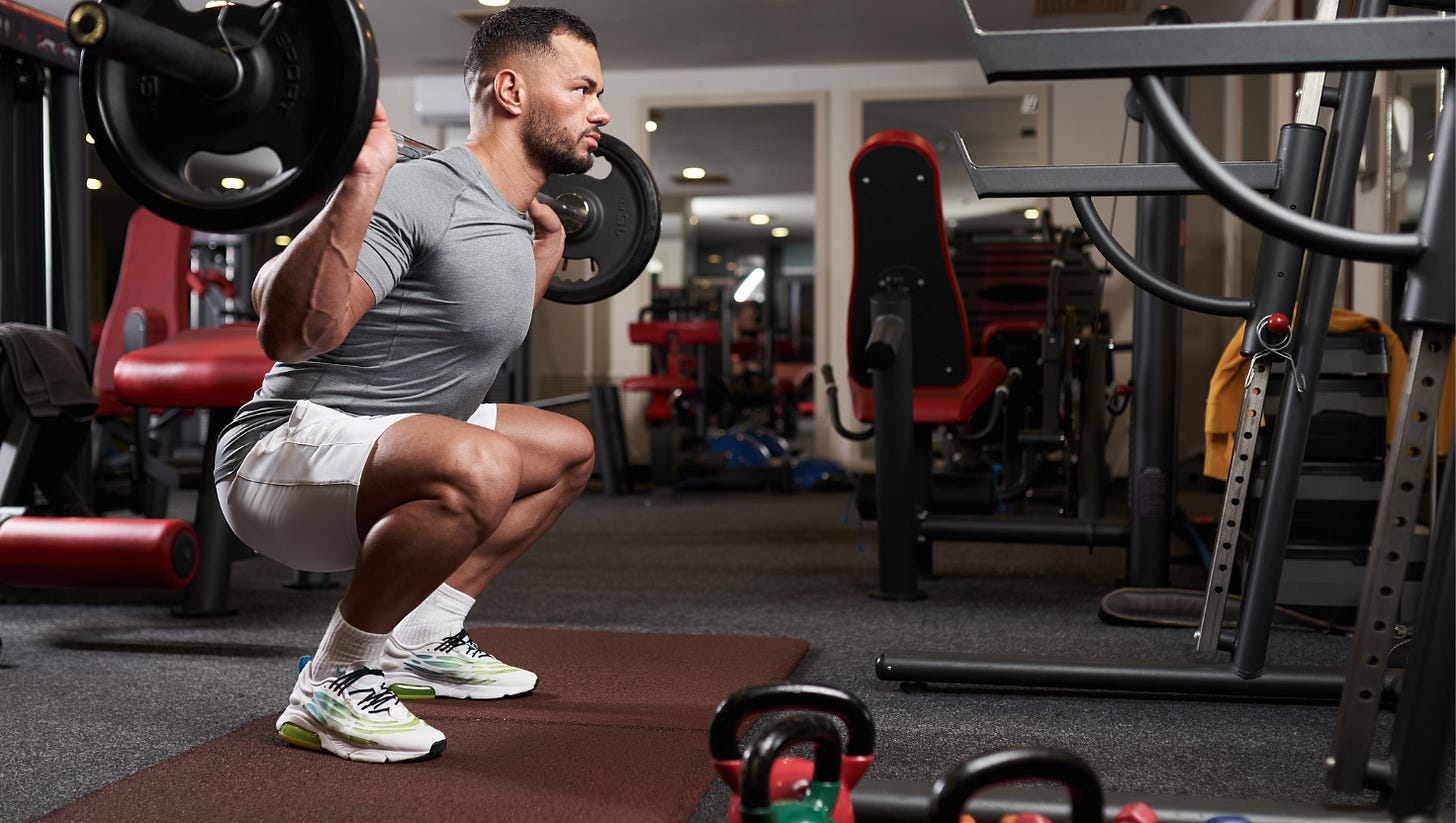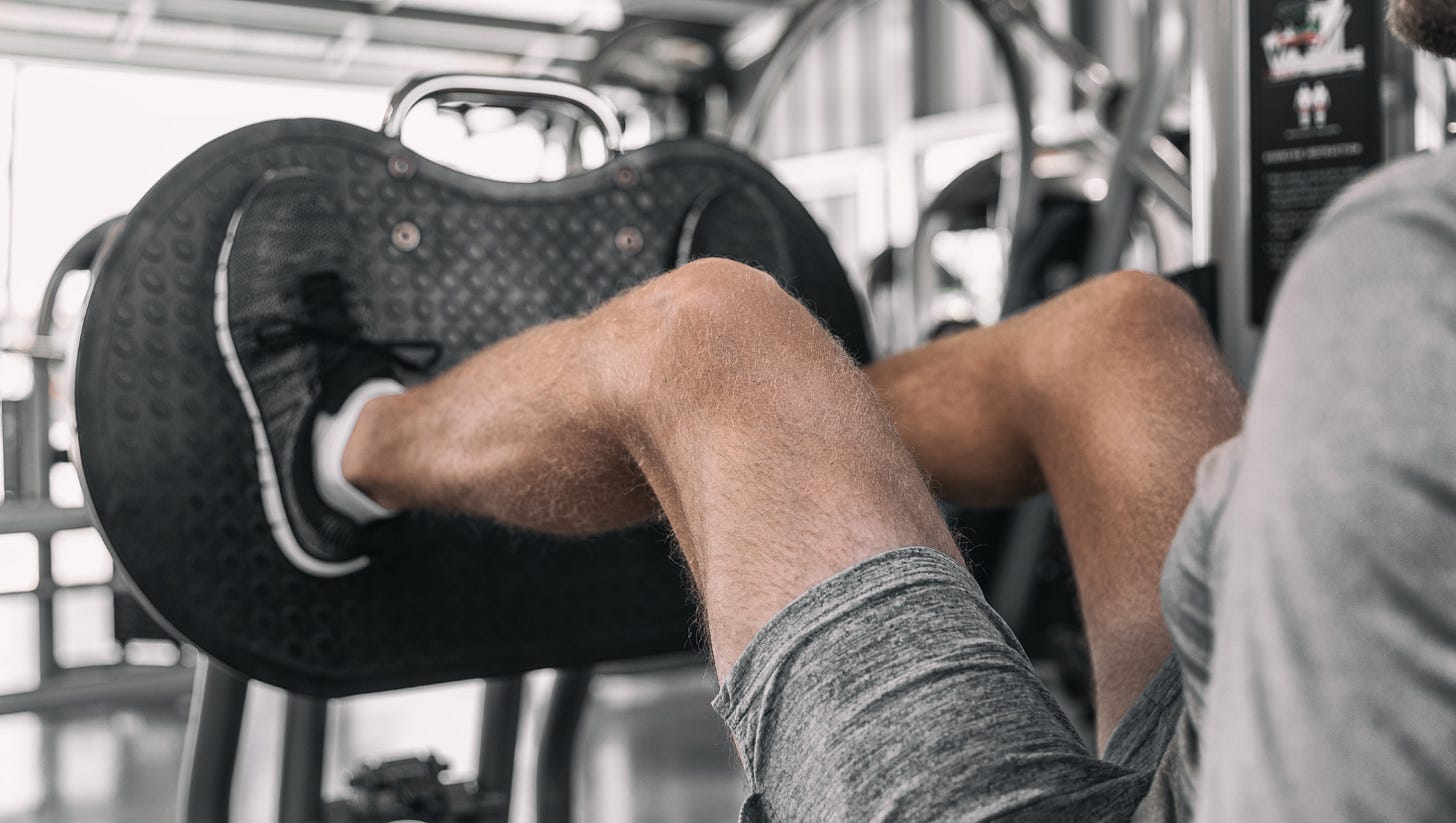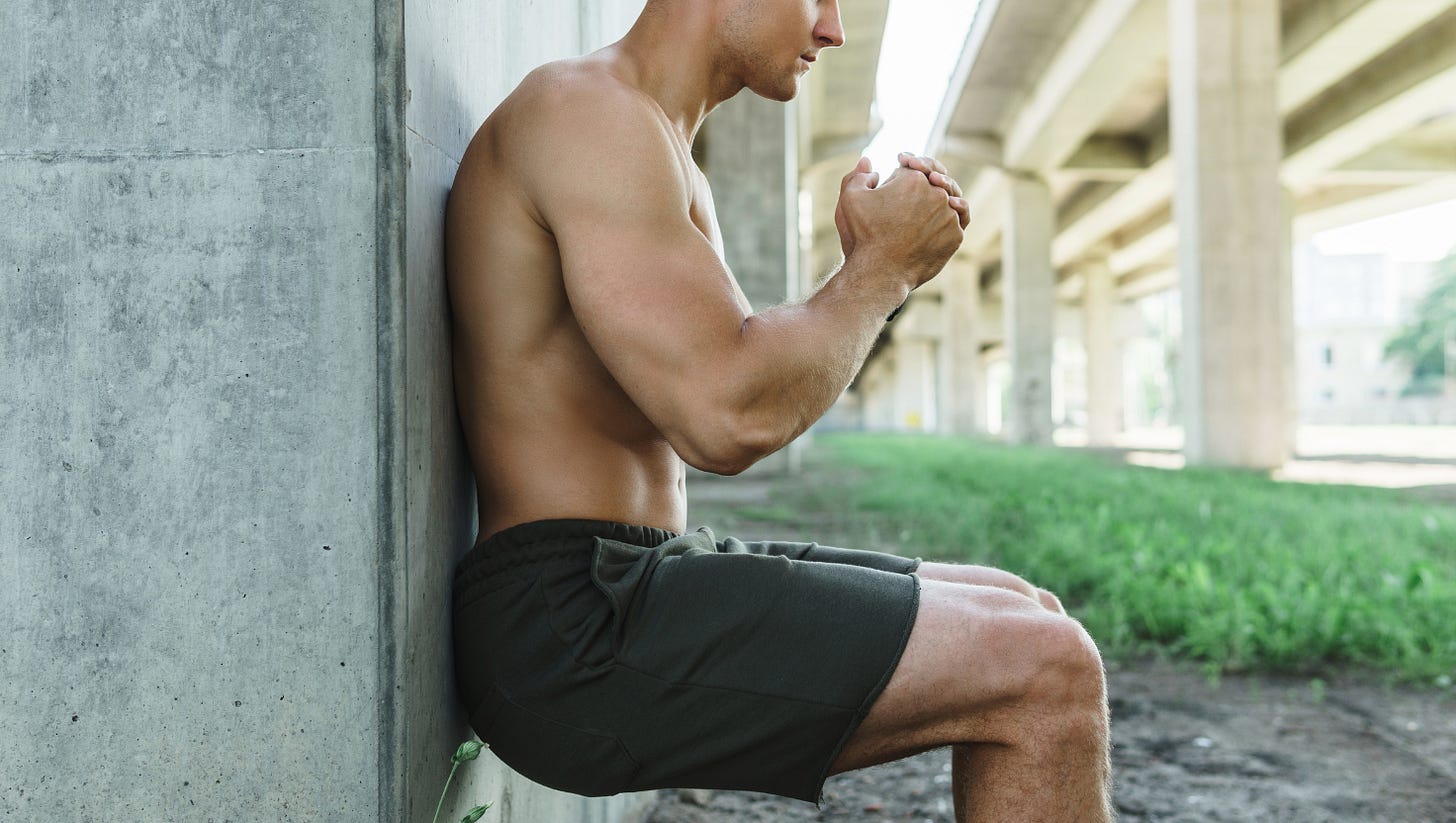If you're navigating ACL recovery, you know the journey involves ups and downs. One of the biggest hurdles we consistently face – both as patients and clinicians – is getting that operated leg strong again, particularly the quads and hamstrings.
We know regaining strength isn't just about feeling powerful; it's absolutely vital for getting back to sport safely, cutting down re-injury risk, and looking after your knee long-term.
For too long, we've seen persistent strength deficits linger well beyond the 6-month mark post-surgery. This has rightly led to questions: Are we doing enough in rehab? Is our training intense and specific enough?
Thankfully, research continues to shed light on how we can optimise recovery.
A few years ago, I read a paper that completed changed my clinical practice when it came to loading my ACL patients in the gym after surgery.
This really important study by Wouter Welling and colleagues published a few years back (2019, Physical Therapy in Sport) provides compelling evidence and practical lessons that are still incredibly relevant today.
It tackled the question: Can a progressive strength training program help amateur soccer players effectively restore quad and hamstring strength after ACLR?
The Big Question: Can We Beat Post-ACLR Weakness?
The researchers set out to compare the results of a structured, progressively challenging strength program in male amateur soccer players after ACLR against similar healthy players (the control group). They wanted to see if this targeted approach could bridge the strength gap often reported in rehab.
How They Did It (The Important Bit!)
They took a group of 38 amateur male soccer players post-ACLR and had them follow a supervised rehab program. The crucial element was the progressive nature of the strength training, based on established principles (like those from the American College of Sports Medicine). This wasn't just going through the motions; it involved:
Phased training: Gradually building from basic activation and endurance to serious strength and power work over several months.
Systematic increases in intensity, sets, reps, and exercise difficulty.
A mix of exercises: Both single-leg and double-leg, closed-chain (like squats) and open-chain (like knee extensions, introduced later).
Objective strength testing (using isokinetic dynamometry) at key time points (approx. 4, 7, and 10 months post-op) to track progress.
The Encouraging Results: What They Found
Here's the good news that should give anyone in ACL rehab a boost:
Catching Up is Possible: While weaker at 4 months (expected), by 7 MONTHS post-op, the ACLR group's operated leg showed no significant difference in average peak quad or hamstring strength compared to the healthy control group's dominant leg!
Strength Keeps Improving: The gains didn't stop at 7 months. Strength continued to increase significantly between the 7 and 10-month tests.
Hitting Strength Targets: At 10 months post-op:
Around 66% hit the common >90% Limb Symmetry Index (LSI) target for quads (comparing operated to non-operated leg).
Around 76% hit the >90% LSI target for hamstrings.
Around 71% achieved a key strength-to-bodyweight target (>3.0 Nm/kg) for their quads.
(Takeaway: Good results, but highlights that ~1/3 still had deficits at 10 months, emphasising the need for continued work and individualised plans).
Feeling Better Too: Patient-reported knee function (using the IKDC score) also significantly improved over time, reaching good levels by 10 months.
Graft Choice Matters (A Little): They found differences based on graft type. Those with a Patellar Tendon (BPTB) graft generally had stronger hamstrings throughout. Those with a Hamstring Tendon (HT) graft tended to achieve better quadriceps symmetry earlier (at 7 & 10 months). This just reinforces that rehab should be tailored.
What Did Rehab Actually Look Like? A Phase-by-Phase Snapshot
To understand how they achieved those strength gains, it helps to see how the rehab progressed. Here’s a glimpse into what each phase focused on, based on the Welling et al. (2019) study protocol:
How often did they train? The study reported that, on average, the players attended supervised physiotherapy sessions 2.6 times per week (so typically 2 or 3 sessions weekly). While the paper doesn't explicitly state a different frequency recommendation for each phase, the total number of sessions reported at each testing point suggests this frequency was relatively consistent throughout the entire 10-month period. (It's worth noting, as the authors did, that session frequency can sometimes be influenced by local healthcare systems, so this might vary depending on where you are).
Now, let's look at the phases:
Phase 1: The Foundation Phase (Roughly Weeks 0-4 Post-Op)
Goals: Protect the healing graft, manage pain and swelling, regain full knee extension (straightening), start basic muscle activation (especially quads).
Typical Activities:
Early Weeks (Home/Initial Physio): Walking with crutches, gentle range of motion exercises (like heel slides), quadriceps activation exercises (quad sets - tensing the muscle without moving the joint), leg raises (if comfortable and controlled). Emphasis on rest and wound care.
Clinic Focus (from ~2 weeks): Ensuring full extension is met, continued quad activation, managing swelling. Low-load exercises under physio supervision during those ~2-3 weekly sessions.
Phase 2: Building Endurance (Roughly Month 1 to Month 4 Post-Op)
Goals: Build muscle endurance, improve basic strength, prepare tissues for heavier loads, maintain range of motion.
Typical Activities (during the ~2-3 weekly supervised sessions):
Introduction of low-load resistance exercises.
Examples: Bodyweight or light resistance step-ups, leg press, calf raises, maybe light hamstring curls (often bodyweight/gravity resisted initially).
No resisted open-chain knee extensions yet in this phase according to the protocol.
Focus on controlled movements.
Key Parameters:
Sets: Max 2 per exercise.
Reps: High (15-25).
Intensity: Low (<50% of estimated 1 Rep Max).
Rest: 2-3 minutes between sets.
Progression: Based on minimal pain/swelling increase 24hrs after session.
Phase 3: Getting Stronger (Roughly Month 4 to Month 7 Post-Op)
Goals: Significantly increase quadriceps and hamstring strength, build muscle mass (hypertrophy), normalize strength between legs (addressing deficits found in the 4-month test), introduce more complex movements.
Typical Activities (during the ~2-3 weekly supervised sessions):
Strength Training Focus:
Examples: Squats (various forms like front, back, goblet, progressing depth), deadlifts (conventional, Romanian), lunges/split squats, step-ups (adding weight), leg press (increasing weight).
Introduction of Resisted Open-Chain: Knee extensions (started 90-45 degrees, progressing range) and hamstring curls with machine/band resistance.
Both double-leg and single-leg variations are crucial here.
Continued Endurance Work: As per Phase 2 parameters, perhaps fewer exercises.
Other elements: Balance training, introduction to running (if strength criteria met - e.g., LSI >70%), jump-landing technique drills.
Key Parameters (Strength):
Sets: 2-4 per exercise.
Reps: Moderate (8-12 reps, or using pyramid sets like 14-12-10-8).
Intensity: Moderate to Hard (60-80% of estimated 1 Rep Max).
Rest: 2-3 minutes between sets.
Phase 4: Max Strength, Power & Sport Prep (Roughly Month 7 to Month 10+ Post-Op)
Goals: Maximize strength, develop muscle power (ability to produce force quickly), address any remaining deficits found in the 7-month test, start transitioning towards sport-specific demands.
Typical Activities (during the ~2-3 weekly supervised sessions):
Advanced Strength & Power:
Using exercises from Phase 3 but potentially progressing to heavier loads for lower reps.
Focus on Execution Speed: Lifting explosively (concentric), lowering slowly (5-6 sec eccentric) on relevant exercises (e.g., leg press, Nordic curls).
Continued Endurance/Strength Work: As needed, tailored to individual deficits.
Other Elements: More advanced running drills, agility work, plyometrics (jumping/hopping), sport-specific movement drills, leading into on-field rehabilitation.
Key Parameters (Max Strength Focus):
Sets: Can progress towards 5 sets for key lifts.
Reps: Low (e.g., 3-5 reps).
Intensity: High (>80% of estimated 1 Rep Max).
Rest: 2-3 minutes between sets.
Important Note: This is a snapshot based on the study's protocol for amateur male soccer players. Rehab timelines and specific exercises will vary based on surgeon's guidelines, clinical assessment, athlete’s specific needs, graft type, and how the knee responds! The key is the progressive nature and the adherence to sound training principles within each phase.
Making it Actionable: Key Principles for Your Rehab Journey
So, how can you apply these lessons? Based on the study's successful approach, here are key principles to focus on:
Structure Your Rehab in Phases: Don't just do random exercises. Follow a plan that moves logically from basics to endurance, then strength/hypertrophy, and finally max strength/power.
Embrace Progressive Overload (The Non-Negotiable!): You must consistently increase the challenge (weight, reps, difficulty) to get stronger. Don't let rehab get stale.
Use a Mix of Exercises: Include both Closed Chain (CKC: squats, lunges) and Open Chain (OKC: knee extensions, hamstring curls - introduced strategically later). Use both double-leg and single-leg exercises.
Train Across the Strength Spectrum: Include work for endurance (higher reps/lower intensity), strength/size (moderate reps/intensity), and later, max strength/power (lower reps/higher intensity).
Don't Skimp on Rest Between Sets: Aim for 2-3 minutes rest, especially for strength work (sets of 12 reps or fewer), to ensure quality reps.
Vary Your Exercises: Include planned variations of key movements over time to prevent boredom and stimulate muscles differently.
Focus on How You Move (Later Stages): Once a strength base is established, think about tempo. Lift explosively (concentric) and lower with control (eccentric).
Listen to The Knee (But Don't Stop Progress): Monitor pain and swelling (especially 24hrs post-session). Adjust if needed, but don't let minor, acceptable soreness halt progress entirely.
Use Criteria, Not Just the Calendar (Testing Matters!): Progression and major decisions (like return to running/sport) should be guided by achieving objective strength goals, not just by the calendar.
Consistency is Crucial: Training 2-3 times per week consistently was key. Supervision, especially early on or when lifting heavy, helps ensure good technique and progression.
What This Means for The ACL Journey
This research is a powerful reminder that significant strength recovery IS achievable within the first year post-ACLR if the rehab approach is right. It highlights the immense value of:
Dedicated, progressive strength work: It's hard work, but it pays dividends.
Patience AND persistence: Recovery takes time (think 9-12 months minimum for return to sport readiness for many), but progress comes from consistent effort guided by criteria.
Individualised care: The journey will be unique based on the starting point, graft type, goals, and how the body responds.
Objective testing: Knowing your numbers helps track progress and make smarter decisions.
Strength is the foundation upon which we build back complex movement skills, agility, and confidence. While it's not the only piece of the puzzle (neuromuscular control, landing mechanics, psychology etc., are also vital), it's arguably the most critical one to get right early and consistently.
Final Thoughts
For patients: Be an active participant in your rehab. Understand the 'why' behind your exercises. Commit to the process, communicate with your physio, and celebrate the strength milestones you hit along the way.
For clinicians: Let's ensure our programs embody these principles of progressive overload, criterion-based progression, and objective monitoring. We have the tools to help our patients achieve excellent outcomes.
This study gives us hope and a clear direction. With the right approach, getting strong after ACL surgery is not just possible – it's expected.
Keep working smart, everyone!
Cheers, Mick
Reference:
Welling, W., Benjaminse, A., Lemmink, K., Dingenen, B., & Gokeler, A. (2019). Progressive strength training restores quadriceps and hamstring muscle strength within 7 months after ACL reconstruction in amateur male soccer players. Physical Therapy in Sport, 40, 10-18. https://doi.org/10.1016/j.ptsp.2019.08.004
What are your experiences with strength training after ACLR? Share your successes and challenges in the comments below!













Can you elaborate a little about why weakness is expected at 4 mo s/p please?